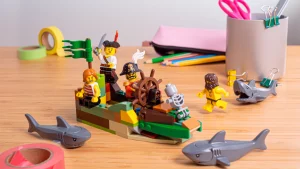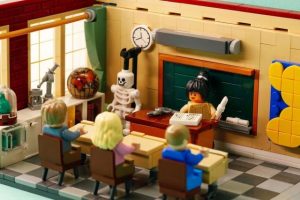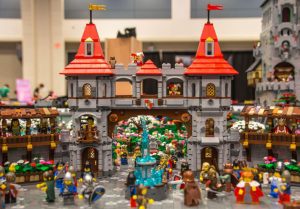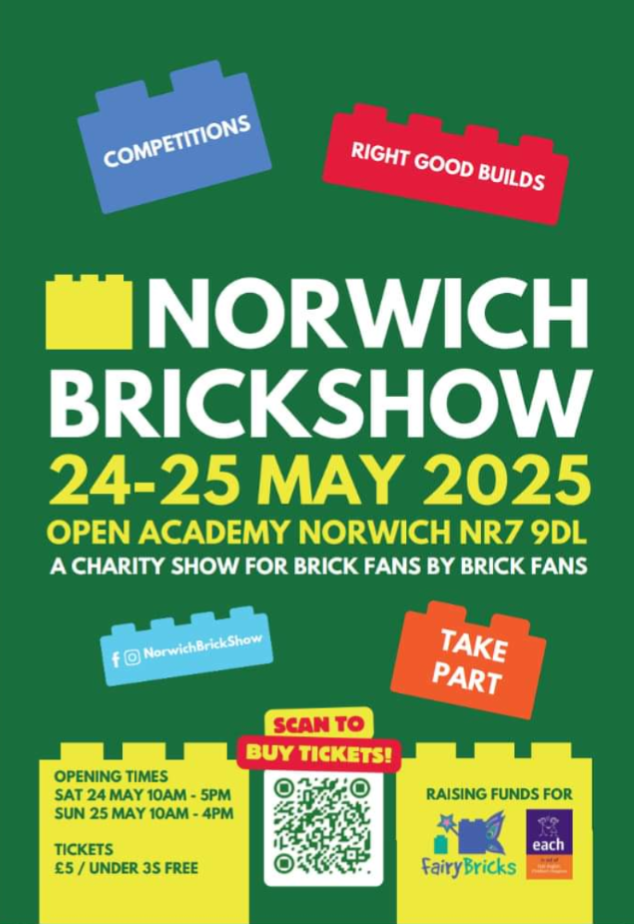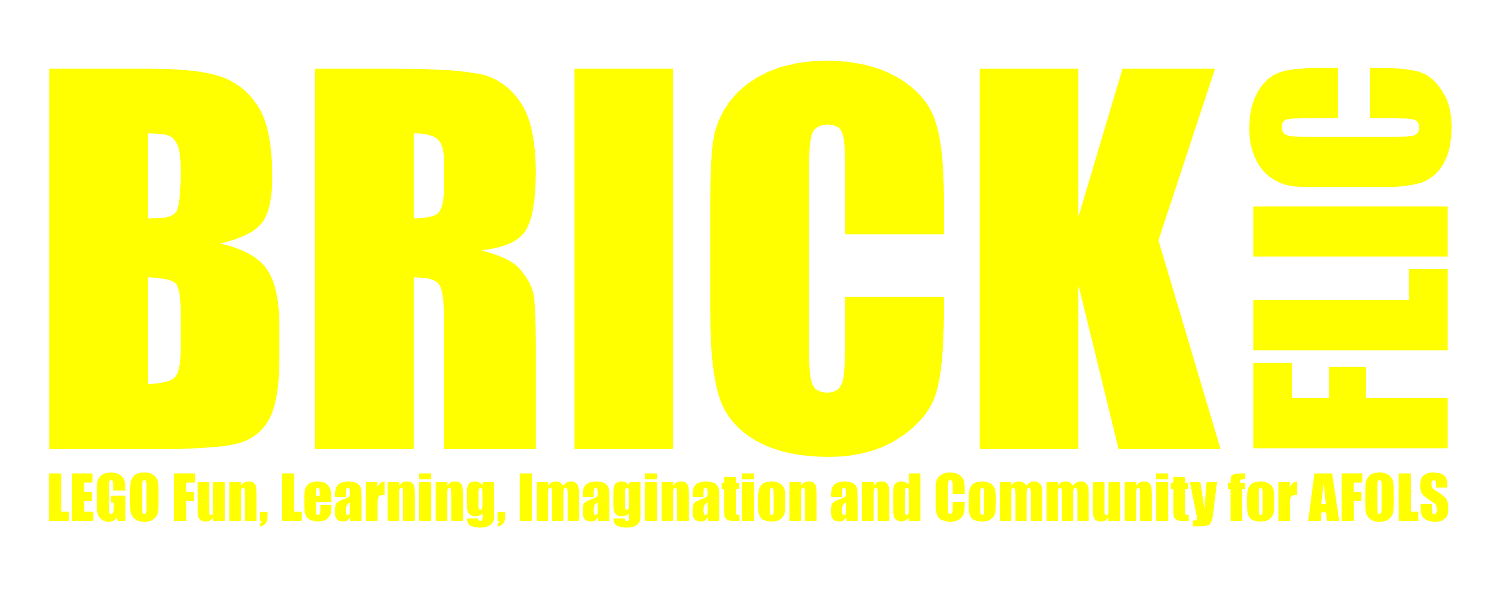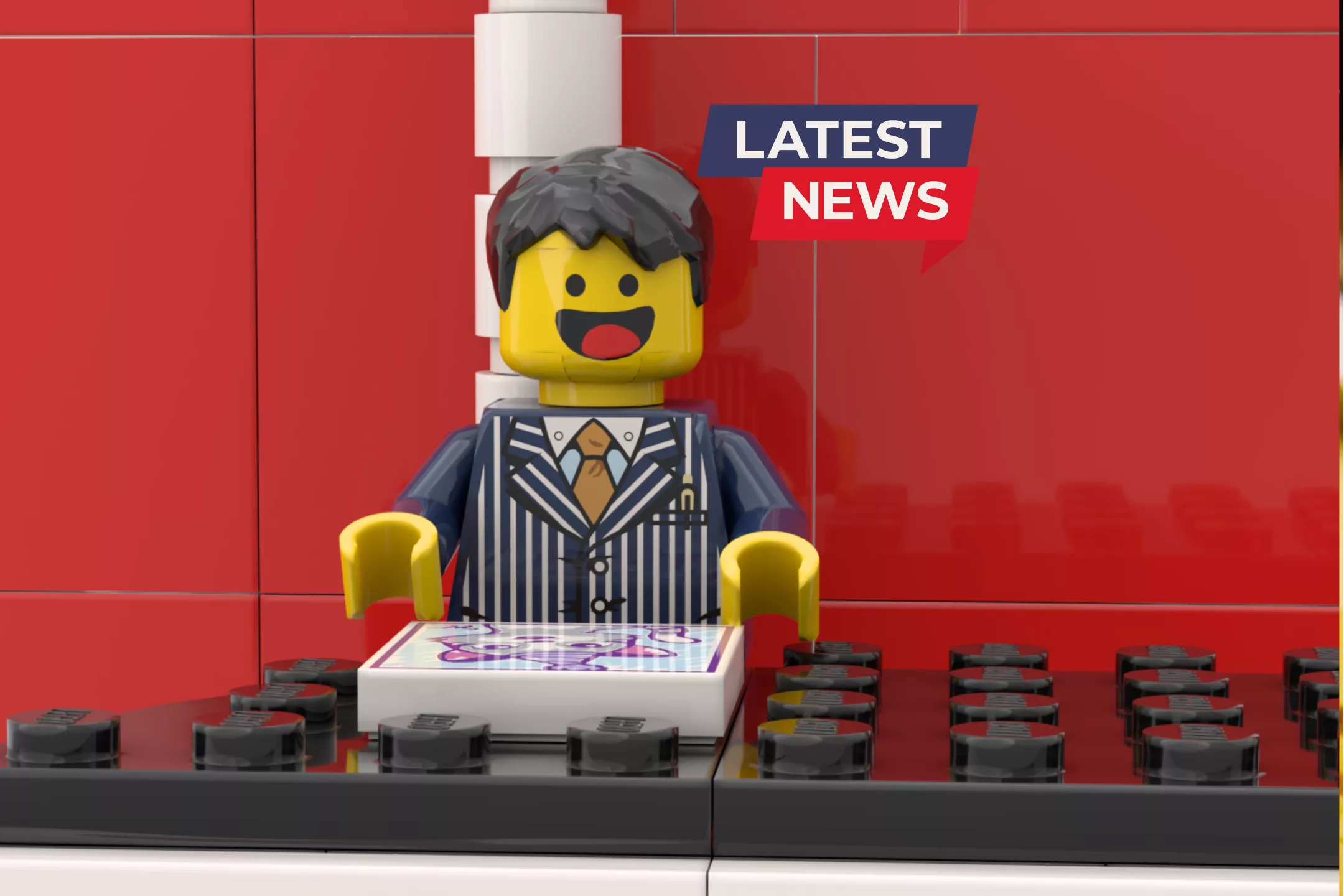LEGO Tudor Corner – More Victorian than Tudor?
Here at BrickFLIC HQ we love the LEGO Icons Modular builds (who doesn’t?) and we have a growing collection of these sets on display. So, of course, we eagerly anticipated the release of the 2025 LEGO Icons Modular set, LEGO Tudor Corner (10350), designed by François Zapf and Ashwin Visser.
Table of Contents
A LEGO Tudor Revival
The name, LEGO Tudor Corner, immediately piqued my interest, having spent all my adult life living in areas of Britain famed for their Tudor architecture. In fact, BrickFLIC HQ is located in the snug of a mid seventeenth century former coaching inn, with the archetypal warped oak beams, heavy-looking ceiling, wonky walls, sloping floor and bitterly cold draughts. Ok, 1650 is the Stuart period, not Tudor, but what’s fifty years between LEGO friends?
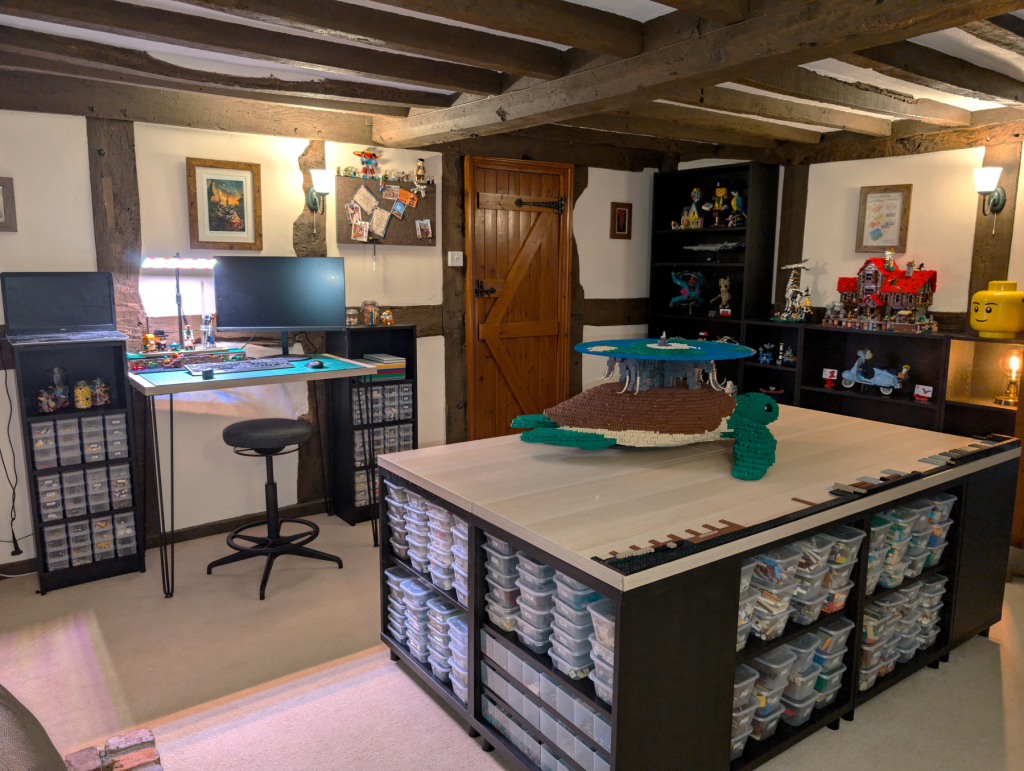
This is why I was expecting the LEGO Tudor Corner to be a bit more, well, Tudor. The deign is much more reflective of Tudor Revival architecture or, as it’s known in the UK, ‘Mock Tudor’. The red roof, orange brick and dark green tiles, although typical of a British pub, suggest a Victorian style and the chimney sweep Minifigure adds to the Dickensian imagery. The black and white upper section of the pub is far too straight and uniform in shape to truly reflect a Tudor building, assuming of course that the designer was aiming for realism.
Making LEGO Tudor Corner a Bit More Tudor
Let’s break these points down a little more. The roof of LEGO Tudor Corner is steeply pitched just as the ‘fairy roofs’, as they were known at the time, used to be. The design is great in terms of having different roof sections cut in, but Tudor roofs would likely have been made using slate tiles, or possibly clay. It is easy to see why LEGO would opt for a red roof on the design because it really makes the build stand out, but it would have been nice to see overlapping tiles.
Perhaps something like the 1×1 / 1×2 slope technique below in dark bluish grey, or even dark blue. This would also have complimented the blue used on the exterior of the haberdashery.
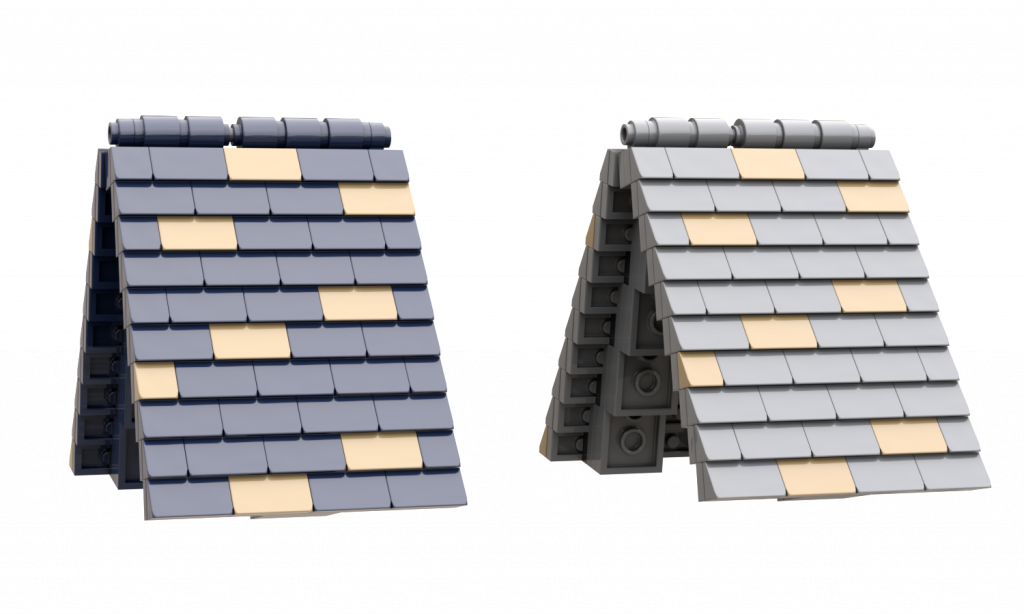
Regarding the orange bricks, they are just too modern for a Tudor building and I am quite confused by this design decision. In an interview, the designer said, “We had already, at The LEGO Group, designed a lot of half-timber walls for medieval buildings, and we wanted to add a novel technique with angled wooden beams. It was a challenge to design, but I can assure you, when you’re building this, it’s super satisfying. That’s partly so it looks like it’s difficult, but it’s super satisfying to build.” They were very happy with the building techniques they had designed, so it would have been nice to see them extend down to ground level.
I do like the contrast given by the dark green tiles but for this to truly be a Tudor style building, they would need to go.
Extending the black and white beamed walls would not only have added to the designs historical authenticity of LEGO Tudor Corner, but it would also have added to the building experience. There may still be too many straight lines and uniform shapes but, if you wanted to have a go at amending this, check out these amazing Tudor Wall techniques provided to us by LEGO designer Ralf Langer. You might even be able to recreate one of BrickFLIC’s local pubs, the Feathers in Ludlow!

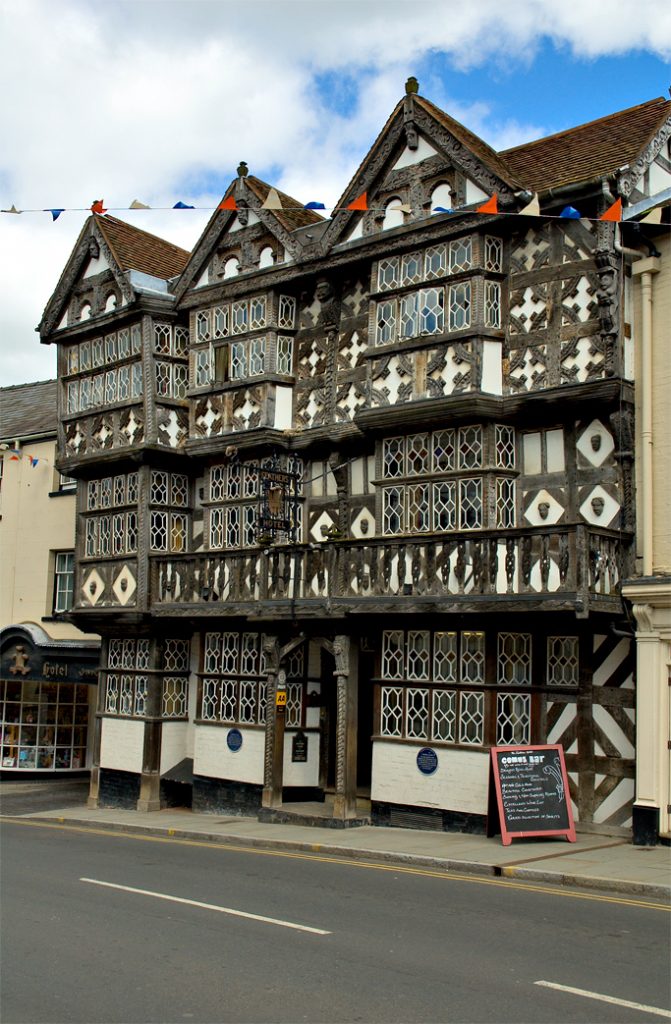
The “Real” Tudor Corner
To mark the release of LEGO Tudor Corner, redditor “obsolescencephoto“ went in search of the ‘real’ Tudor Corner. The design is rumoured to be based on the Coach House Inn, a pub situated in my former home city of Chester in the northwest of England, and which, incidentally, I can highly recommend. The resemblance is indeed striking and, I think, this rumour validates my ‘Victorian not Tudor’ theory, since the Coach House dates back to 1840. It is lovely to think that a place that I personally know very well may have been the inspiration for a LEGO set.
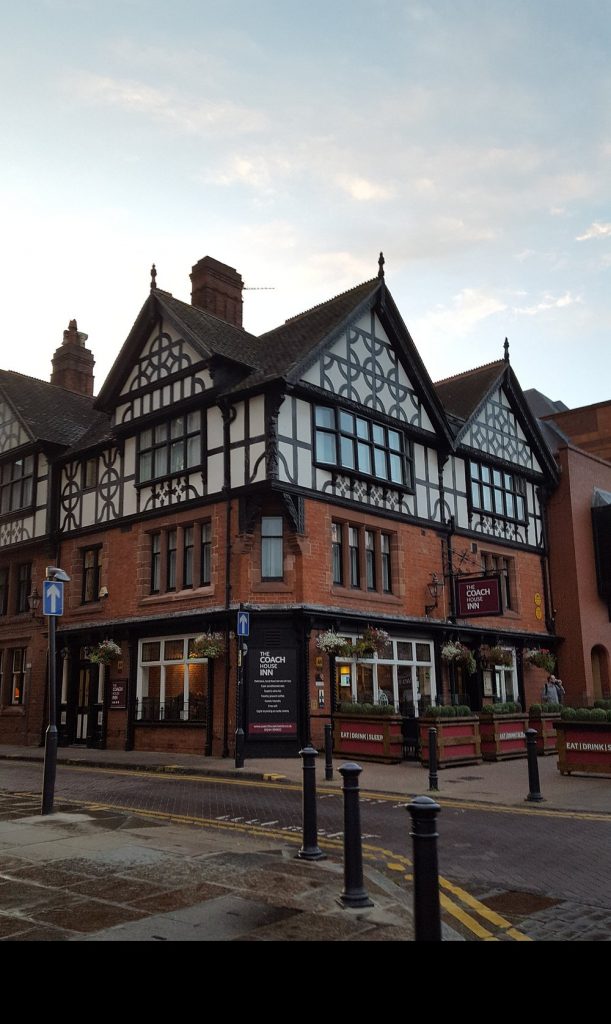
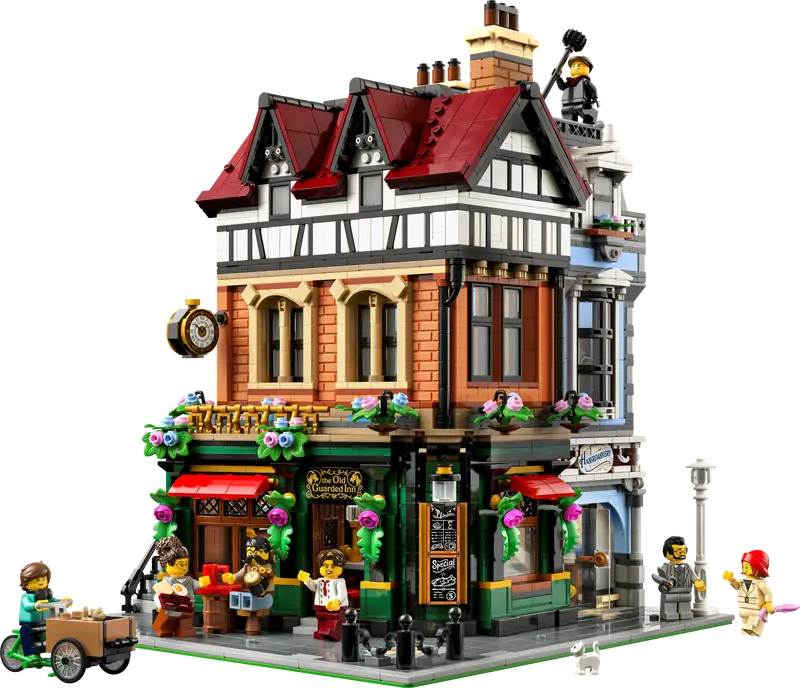
It Might be Mock Tudor, but I Love it Anyway
Historical nitpicking aside – I initially had reservations as to how well LEGO Tudor Corner would fit in with the other LEGO Modular sets, since they are so collectible very few fans will have just one, but the more I look at LEGO Tudor Corner, the more I like it. The more I looked for its lack of historical accuracy, the more I could see the charm it brings.
LEGO Modular buildings often rely on bright, ‘poppy’ colours to catch the eye but this set has an extra level of refined detail that would definitely add a touch of class to any LEGO city. One slight downside is that the external staircase will highlight the plain walls of neighbouring modular sets.
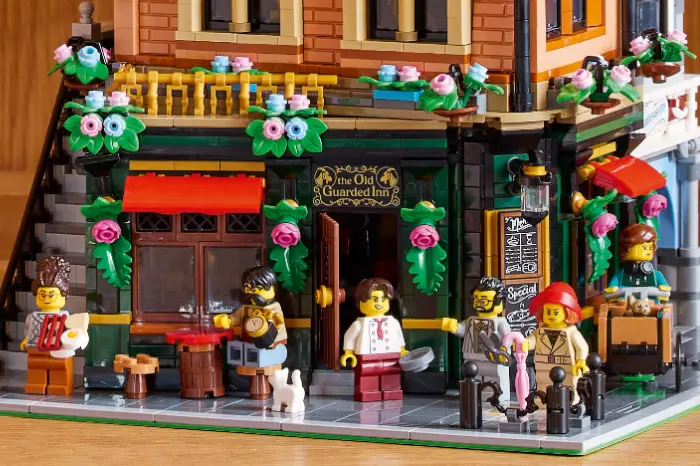
I especially like the angle of the doorway into the pub, The Old Guarded Inn, which makes it stand out from other corner modulars in the series. The clock on the outside of the building gives a lovely clue as to the magic of the clockmaker’s workshop within.
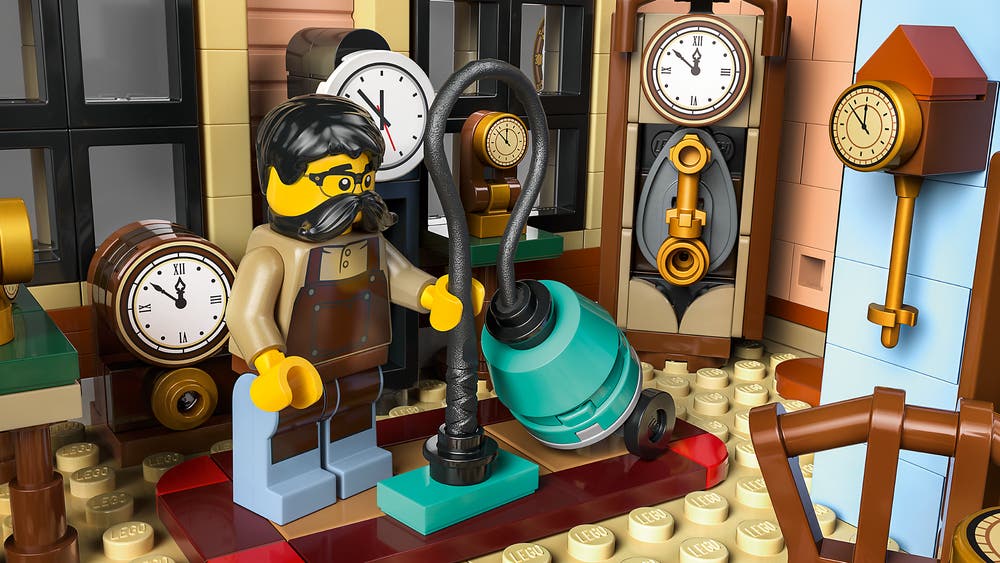
As a fashion student and dressmaker, I appreciate the inclusion of the habadashery next door. Although, any keen sewist will know that a pub adjoining a fabric shop could easily lead to a significant overspend!
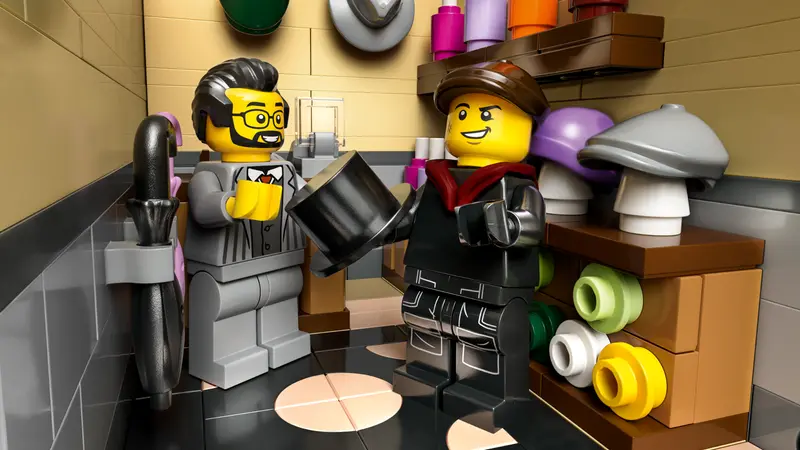
And my favourite element? Of course it is the cats who live in the apartment upstairs, so cute!
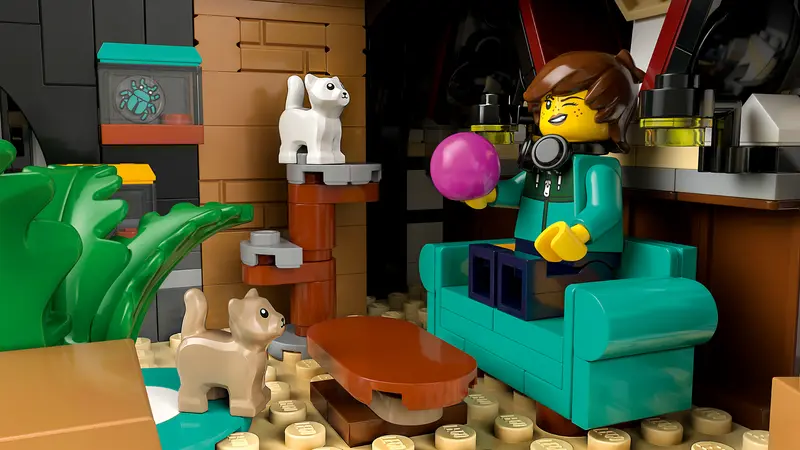
Although the designer stated, “We looked at many Tudor buildings, particularly ones that were built ages ago but still survive to today,” I think the LEGO Tudor Corner remains firmly in the ‘Mock Tudor’ category. However, I still love it for what it is, the evolution of the LEGO modular line and a sign of exciting things to come.
LEGO Tudor Corner or LEGO Victorian Corner? Does it matter? Let us know in the comments below!

